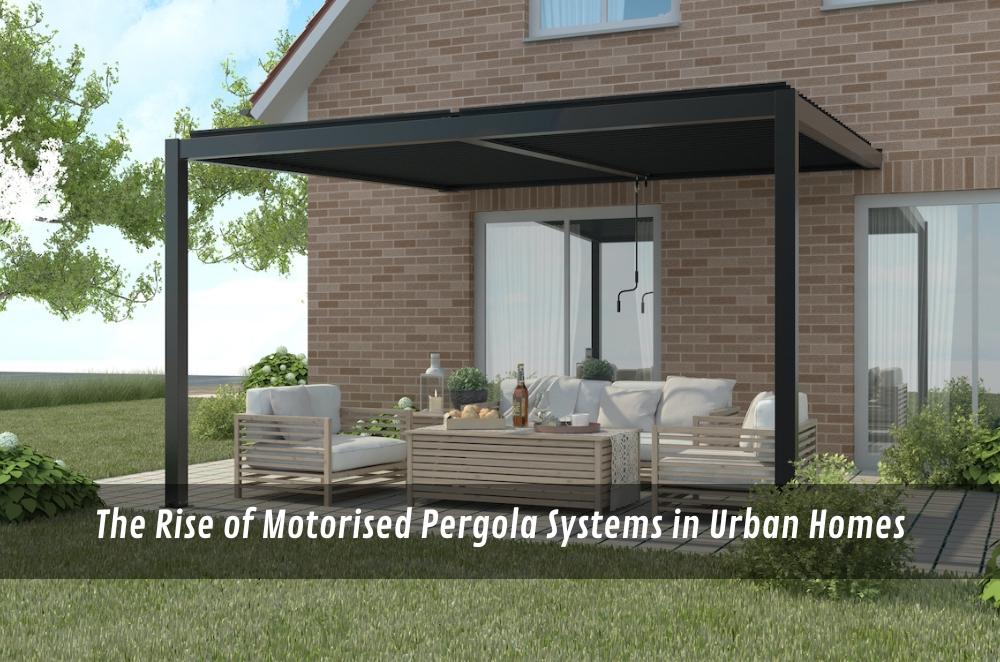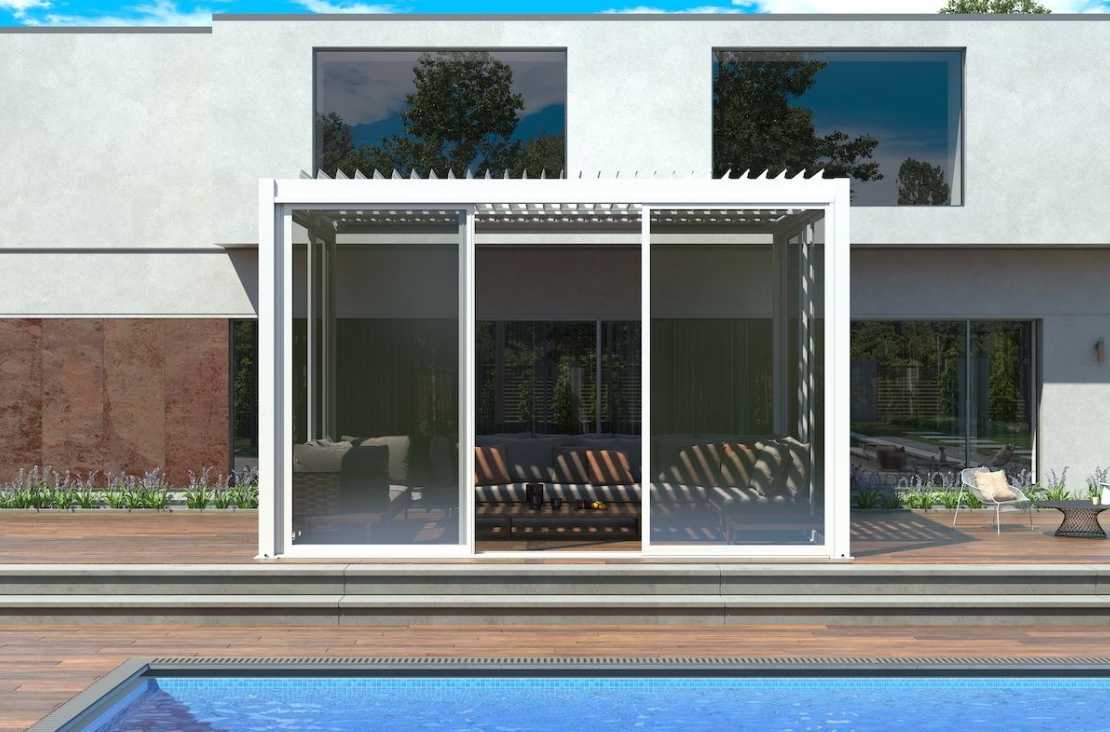The Rise of Motorised Pergola Systems in Urban Homes

City homes are getting smaller, but our appetite for open, comfortable spaces hasn’t changed. Many urban homeowners are learning that clever design often beats extra square metres. That’s why adjustable shade pergola systems have become such a quiet game-changer in modern outdoor living. They make it easy to tune the light, airflow and shelter with a single touch — opening the louvres wide on cool mornings, then angling them gently as the afternoon sun heats up. The beauty lies in their subtlety; they don’t demand attention, they simply make outdoor spaces more usable. Whether it’s a narrow balcony or a tucked-away courtyard, the right setup turns an exposed spot into a calm, flexible extension of the home. It’s not about gadgets or gimmicks — it’s about comfort that adapts naturally, letting city dwellers enjoy every shift in the day without ever needing to step inside.
Why motorised pergolas suit compact urban spaces
A motorised pergola converts a small balcony or courtyard into a flexible living zone. The trick is pairing the tech with the way you live day to day when the setup mirrors ordinary routines — weekday coffee, late-arvo cool down, a rainy Sunday lunch — the space stops feeling ornamental and becomes part of the home’s rhythm.
-
Flexible shade that adapts hour by hour without closing the space
-
Improved privacy without heavy enclosures or bulky structures
-
Weather resilience via interlocking blades and integrated gutters
-
Cleaner sightlines thanks to concealed wiring and slim frames
On a narrow inner-west balcony, I set scenes for “morning coffee,” “late-arvo cool,” and “storm mode.” It sounds fancy, but in practice, it just means the louvres tilt to predictable angles at sensible times. The result wasn’t a showpiece — it was a space that finally handled glare, light drizzle and neighbours’ sightlines with minimal fuss.
Design choices that influence comfort
Even great hardware can underperform if the basics aren’t addressed early. Orientation, airflow and glare all shape how the pergola feels. Think of the structure as a controllable filter rather than a lid.
-
Orientation: north invites winter light; west needs stronger summer control
-
Airflow: leave a path for warm air to escape through and above the louvres
-
Glare: manage low-angle sun with tilt and, if needed, a discreet side screen
-
Drainage: ensure gutters and downpipes have a clear fall and termination
A compact terrace in Melbourne copped fierce western sun. We avoided overbuilding by specifying a slim vertical screen only on the hot edge and relying on louvre tilt elsewhere. The space kept its openness, and the evening heat settled faster because the air could still move.
Passive design thinking for better shade
Australian homes perform best when design and climate work together. It’s not about overengineering—just understanding how the sun, wind, and shade interact around your property. Even in small city spaces, a few thoughtful choices can turn a hot concrete corner into a comfortable retreat. By following passive home shading principles, you can shape how sunlight enters and moves through your outdoor area without relying solely on technology.
-
Map the harshest sun path first, then place any vertical screening sparingly
-
Set a default louvre angle for summer (vent heat), another for winter (invite light)
-
Keep neighbouring walls in mind — reflected glare can be just as intense
-
Confirm that sensor behaviour (rain/wind) matches your site’s microclimate
Slightly increasing blade overlap on the western edge cut low-angle glare without sacrificing airflow. It’s the kind of adjustment that pays back daily in calmer light and a more even temperature gradient across the seating area.
Planning spaces that actually get used
When shaping your layout, it helps to draw on outdoor entertaining design ideas that focus on flow and flexibility rather than decoration. Think about how you move between the kitchen, dining and lounge zones, and what parts of the space naturally invite gathering. Good design isn’t about filling every corner — it’s about leaving breathing room for people to enjoy it.
-
Prioritise circulation: avoid placing bulky furniture under the tightest head height
-
Give the table the “good” light, and let the lounge claim the quieter corner
-
Choose finishes that tame glare (mid-tones) rather than mirror the sun
-
Pre-wire for discreet lighting so evenings feel effortless, not improvised
I’ve also seen small spaces benefit from shifting the dining table slightly off-centre to maintain a clean “walk line.” It seems trivial, but when you aren’t dodging chair legs, the area feels bigger and more relaxed. Add a narrow planter as a soft edge, and the pergola reads as a room — not just a cover.

Controls and automation that actually help
Automation earns its keep when it removes friction from daily use. The goal isn’t a control panel to master; it’s predictable comfort that hums along in the background.
-
Scenes: set two or three sensible presets rather than dozens you’ll never use
-
Sensors: rain-close is a must; wind-safe modes protect the mechanism on blustery sites
-
Integration: a simple app or voice control is handy when your hands are full in the kitchen
-
Placement: keep wall switches near the transition between indoors and the terrace
On a breezy coastal townhouse, we capped the maximum louvre angle during strong winds so the blades wouldn’t chatter. The owners stopped fiddling and just let the system “hold steady.” That mild constraint improved acoustic comfort more than any thicker curtain or outdoor rug.
Materials and finishes for glare and longevity
Urban settings compress heat, light and airborne grime. Choosing finishes with a calm visual temperature and easy-clean surfaces pays off in the long run.
-
Frame colour: mid-greys and natural tones reduce reflected glare compared to bright whites
-
Blade profile: a clean underside looks lighter overhead; check stiffness over your planned span
-
Fasteners & seals: corrosion-resistant fixings and continuous gaskets limit squeaks and drips
-
Surrounds: matte paving and low-sheen furniture fabrics keep the whole scene visually quiet
A muted palette also helps at night: soft finishes catch light without flashing it back toward windows. Pair that with dimmable, low-glare lighting mounted inside the frame, and you get a consistent, comfortable glow under the canopy and a restful view from the living room.
Maintenance and longevity on small sites
Compact spaces concentrate wear. Dust collects in corners, gutters fill faster, and wind funnels through gaps between buildings. A seasonal routine keeps everything feeling fresh.
-
Clear gutters and downpipes so rain doesn’t back up under doors
-
Wipe blade edges and seals to stop debris from wicking water inside
-
Test sensors after any big blow; tweak angles if wind patterns change
-
Note motor noise shifts — they’re early clues a linkage needs attention
I like to tie maintenance to milestones you’ll remember — first warm weekend, first cool change — so it becomes a habit. Most of the work is light: a soft brush, a gentle hose, a quick test of the controller. It’s the consistency that preserves easy operation.
Final thoughts
Motorised pergolas thrive in urban homes because they make small spaces more adaptable without adding clutter. When orientation, airflow, and light control work together, even a modest balcony can feel generous and comfortable year-round. The goal isn’t perfection — it’s balance. You want a space that changes with the day and feels effortless, no matter the season.
For anyone curious about where the technology is heading, it’s worth looking into modern outdoor shade innovations that are shaping the next generation of pergola systems. These advances focus on quieter operation, smoother automation, and slimmer designs that blend into contemporary architecture. Together, they point to a future where outdoor comfort is as intuitive as adjusting the light indoors.








